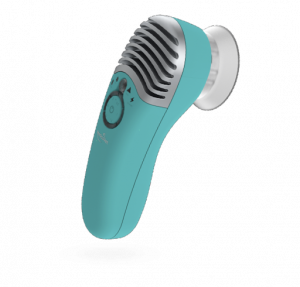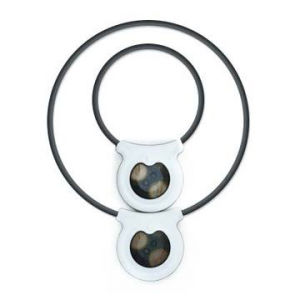New Technologies for Home Treatment of Pet Pain

As a pet owner, it’s not easy to see your pet in pain. Working with pet owners, the question I hear most often is “what more can I do?”. If you’re reading this post to better understand treatment options for your pet in pain, this article covers some new technologies that improve your pet’s quality of life at home, which compliment the work done by your veterinary care team.
Thankfully, the demand from pet owners for home treatments has spurred many great treatments that can be administered at home. These options include alternative medicines such as acupuncture and chiropractic, manual therapies like massage, range of motion, and stretching, or supplements that include herbs (turmeric), nutraceuticals, and proprietary blends offered by long-standing, reputable companies. These options are covered in other articles, while this post covers interesting new technologies that are gaining adoption in the market.
The Tech Landscape for Home Treatment
As a practice owner supporting pet owners who want to treat at home, I’ve had success with 4 products:
- photobiomodulation (PBM) therapy
- assistive devices
- pulsed electromagnetic field (PEMF) therapy
- and thermal agents

Photobiomodulation (or PBM) therapy (otherwise known as cold or therapeutic laser) has really taken off in the past few decades. Like PEMF (described below), it is an FDA-approved, non-pharmaceutical method of addressing inflammation and its cascade of signs. Instead of microcurrent, this technology uses a therapeutic wavelength of light. This treatment is used successfully in-clinic, but the stumbling block has historically been access for pet owners., Having to bring their pets to clinics for regular treatments proves expensive and a logistical nightmare. In the last few years, a company has moved PBM treatment into the home via a safe and effective PBM device supported by the clinic. The device is easy to use tolerated well by pets in their stress-free home environment, and supported by cutting-edge technology.
Assistive devices consist of braces that can improve biomechanics, alleviate pain, and improve mobility. The choices are endless. Use due diligence to select the best option for your pet. A simple sling or harness to alleviate weight bearing stress by supporting your pet can be tremendously helpful as a temporary means to an end while your dog heals or as a more permanent assistance for an elderly or neurologically impaired dog. The quality varies widely. Ensure that the product is not only good for your dog but also for your own body mechanics. If you injure yourself while helping your dog, then you are no help to anybody. Mobility carts offer a way for your dog to have independence, particularly outdoors. There are both custom and off-the-shelf carts to choose from. Consider if your dog is likely to be in the cart short term or long term when making this decision.

Pulsed Electromagnetic Field (or PEMF) works by applying magnetic fields to the body. It comes in a variety of applications from beds that your pet can lie on to passively receive treatment to wearable garments and finally my personal favorite the Assisi Loop. PEMF delivers a micro-current configured to trigger the body’s own natural anti-inflammatory process. The result is accelerated healing and relief of inflammation and its symptoms of pain and swelling. The Assisi Loop provides a safe, effective, non-invasive, non-pharmaceutical therapy. Most pets do not feel it when being treated while others are quite sensitive to it. I have found that many of my patients will actually “consent” to this treatment by positioning themselves in the desirable position for treatment.
Finally, although it’s not as cool as the items above (no pun intended) let’s not overlook the effectiveness of heat and cold. The challenge is often getting the buy-in of your pet for the allotted therapeutic time, often requiring you to sit with them and hold the thermal pack in place. Now, thanks to tech, we have the option of wearable garments. The pet can comfortably move about with the heat pack on their shoulder, for instance, for the suggested 20 minutes while you go about your business. It’s a win-win.
The benefit of any new home treatment
Unlike the grueling process of administering medications that your dog hates, a bonus with many of the above options is that it deepens the pet owners relationship with their pet by providing dedicated 1:1 time in a positive way. Touch, for example, is incredibly connecting emotionally for BOTH of you. Sitting quietly with your dog while administering home treatment to painful areas is another way to build that bond. A word of caution: please consult your veterinarian or another equally appropriate veterinary professional before embarking on any of these pursuits to ensure your pet is the right candidate and the treatment is right for them.
My bio: Chris Cranston, MPT, CCRP, is a Certified Canine Rehabilitation Practitioner of nearly 20 years. Pivoting to pets from her career in sports medicine physical therapy for people at the University of Colorado, she offers unique insights to small animal rehabilitation by straddling both worlds. After building several successful animal rehab practices in the Boston area, most notably FlowDog LLC, which she sold to Angell Animal Medical Center in 2017, Chris now professionally consults , co-hosts PetAbility podcast, educates, and provides freelance mobile physical rehabilitation services in MA. All this while seeking to endlessly entertain her twin Cavaliers, Julep and Baxter.
| My Dog is a Robot covers the pet technology industry. Keep up with the latest news about products, services and companies in the pet tech space. | Contact Us |



